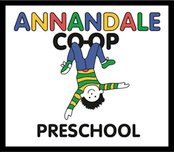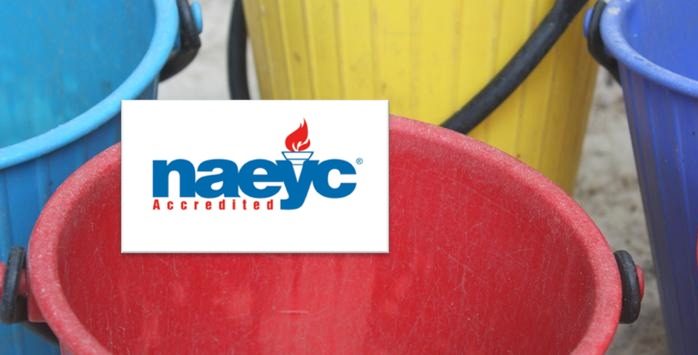Sending your child off to Kindergarten can be a daunting task, especially after having been a strong presence in his or her academic career here at Annandale Cooperative Preschool! Many parents want to know how to prepare their child for Kindergarten but what they often do not realize is that being prepared is more than academics; it additionally means being ready physically, socially, and emotionally! However, let’s tackle academics first.
While academics are obviously a large part of the kindergarten experience, I want to begin by reassuring you that your child is already ready for kindergarten! The expectation is that our schools meet your child where they are when they enter kindergarten. There is no “benchmark” for what students need to know in order to attend kindergarten, so take a breath—your child is already ready! With that being said, here are some ideas for ways to integrate kindergarten academic concepts into your everyday life in fun and stress-free ways.
- Preview books. Do a “picture walk” of books and talk about what you think might happen in the story. This is a time to introduce your child to some new vocabulary that might be in the book.
- Sing rhyming songs or nursery rhymes. Studies have shown a correlation between knowledge of nursery rhyme and later reading skills
- Retell familiar stories or have your child “read” stories by using the pictures
- Make a game of finding letters in the environment, specifically your child’s initial letter.
- Make reading a part of your daily routine, such as right before or after dinner. This will help establish a “homework” or “reading” time.
- While you are reading, model beginning reading skills including pointing to the words as you say them.
- While reading, ask questions about print concepts such as “Where do I start reading on this page?” “Where are the words on this page?” or “Can you find your letter?”
- Review you and your child’s day and talk about what happened. You might choose a specific, recent time from that day, such as dinner, and review what happened. Try to use connecting words such as “and then” or “next.” This will help your child later when they must retell the plot of a book they have read.
- Go beyond asking “what” questions. Ask your child higher level thinking questions such as “Why?” or “How did you know that?” or “How did you figure that out?” or “Why do you think that?”
- Have your child participate in fun, math-related activities. For example, sort toys, clothes, or utensils. When they are done, ask “How did you sort?” Or have child set the table with one to one correspondence for the number of people in your family. Ask “How do you know you have 4/5/etc spoons?”
- Encourage your child to write/draw in natural situations; for example, before you go to the grocery store have your child “write” a list. The purpose is to practice fine motor skills, including holding a pencil or marker, NOT to actually write words.
As for non-academic preparedness, the two major areas to consider are self-help skills and social-emotional skills. Self-help skills include all the minute steps in various larger tasks, such as washing hands, going to the bathroom, and packing up to go home. In Kindergarten, much like here at ACPS, there are many opportunities for social interactions with peers, including morning circle time, group work stations or rotations in literacy and math blocks, and free choice or play. To help develop your child’s self-help and social-emotional abilities, try some of the suggestions below:
-
- Practice what your child’s bedtime routine will look like before a school night. Remember to include doing “homework” (i.e. reading a book), packing a backpack, picking out snack, etc.
- Attend any school events that you can before the school year ends, such as Bingo nights, orientation, literacy nights, etc.
- Use the school’s playground during non-school hours. Invite other families in your neighborhood that have a child also beginning Kindergarten to go with you. With Playground Resurfacing, these areas guarantee a safe environment for children to enjoy their outdoor activities.
- Ask the school if they provide tours to parents. While there, you can ask if you can take pictures of various important places in the school to put your child at ease (i.e. the office, nurse’s office, the hallways to the Kindergarten classes, bathrooms, etc.)
- Talk with your child about how to get to the classroom. Practice the route together at Open House.
- Make sure your child knows how to say his/her first and last name. Consider writing the student’s name, the teacher’s name, and bus number on the inside of the backpack or on a paper, there are Kid Backpacks that already have this security tagging to keep them safe.
- Have your child practice asking an adult for help.
- Develop independence in your child at home. Expect that he/she do some simple tasks independently, such as washing hands, opening food, putting on shoes, etc.
- Ask your child’s school if they have any summer programs that your child can participate in, such as opening the library, ice cream socials, etc.
- Attend the school Open House the week before school begins. Ask to take a picture of your child with his/her teacher so that your child can connect with the face before school begins.
- Practice appropriate play skills, such as sharing and turn-taking, when your child interacts with others. Have your child practice asking for a turn.
- Encourage your child to practice independent problem solving. Your child should be able to tell a peer to “Stop” or say “I don’t like it when you ____.”
- Give your child opportunities at home to work independently on an activity. Notice and praise his/her focus and volume level. Encourage him/her to work for 5 minutes independently, and gradually increase this time.
- Practice how your child will go to school. Practice walking to the bus stop, walking the route to school if they will be a walker, or locate Kiss and Ride if your child will be driven to school.
- Biggest fear for most children seems to be the BUS!
o Practice getting to the bus stop and waiting there. Do this before school gets out this year so your child can see children coming and going off the bus.
o Drive the route that the school bus will take to school and talk about how the bus will make multiple stops; pick something visual at the bus stop that will help your child remember the correct stop.
o Explain to your child that if you or someone that you trust is not at the school bus stop, the bus will bring them back to the school and you will meet them there.
o Get to know your neighborhood children that attend the same school. Introduce your child to some of the older, responsible kids so that they have someone they will feel comfortable asking for help to/from school and on the bus ride.
To close, I will share one of my favorite child development studies that demonstrates the power of the parents’ behavior on the child’s perception of danger and safety. Infants between 9 and 12 months were placed at one end of a table. In the middle of the table, there is a visual drop in which the child perceives a cliff, although in reality the table continues. The infant’s mother stands at the opposite end of the table from the infant holding an appealing toy. As the baby crawls to the center where the cliff begins, the infant stops and looks towards his or her mother. The mother was told to react nonverbally by either showing a face of fear with wide eyes and open mouth OR an encouraging smile. The study found that if the mother gave an encouraging face, the child preceded over the cliff; if the mother showed a fearful face, however, the child chose not to continue crawling. So, how can we extend this study to our 5-year-old entering Kindergarten?
Kindergarten is you and your child’s perceived cliff. What you chose to show your child will cause a similar reaction from your child. So remember when you are at that bus stop, or Kiss and Ride, or they are letting go of your hand at their classroom door, save your tears for when you are in the car and instead give them a huge, confident smile and send them off with a “Have a great day! I love you!”

